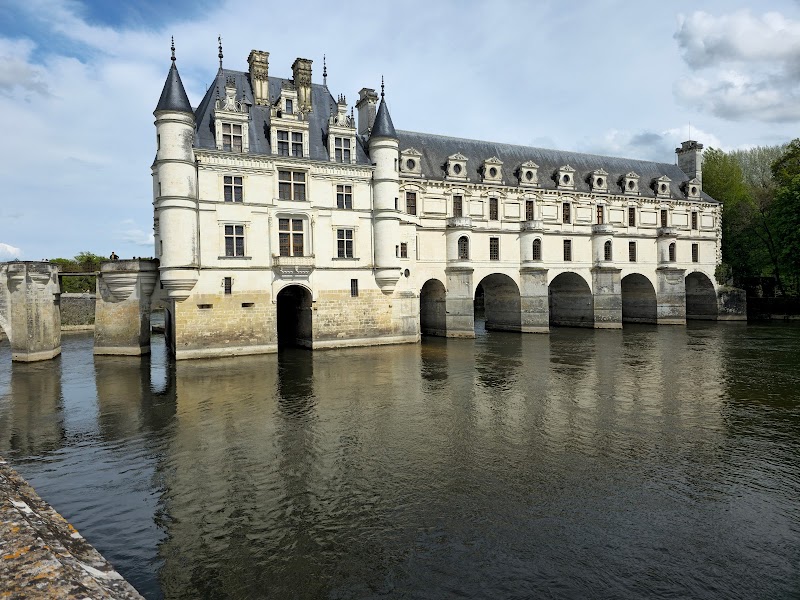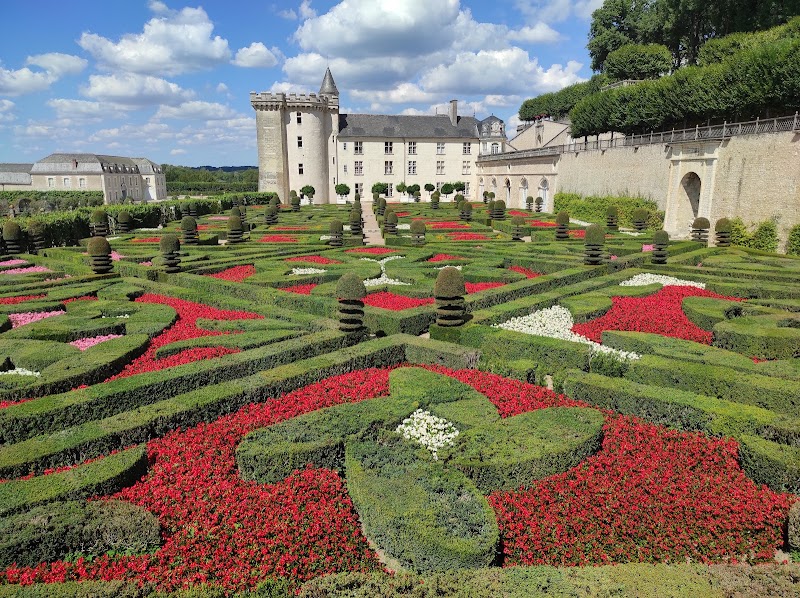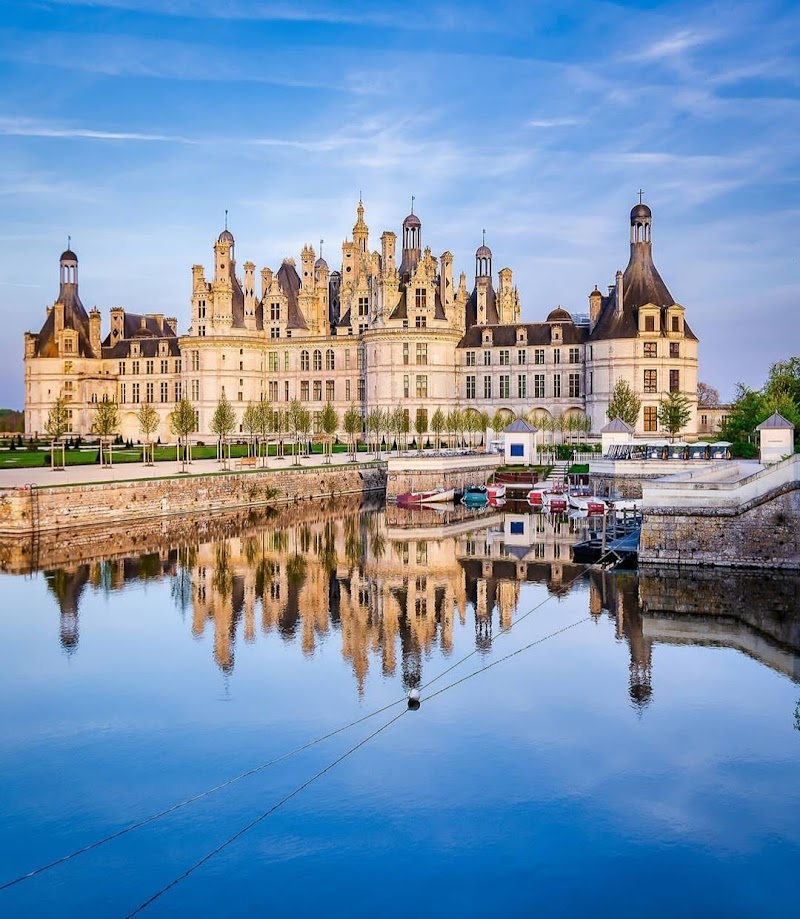Welcome to the Loire Valley
Home to over 300 historical sites, including some of France's most beautiful castles, the Loire Valley is a cultural heritage hotspot. Each year, more than 3.3 million tourists delve into the fascinating history and unmatched charm of this UNESCO World Heritage Site. From the majestic Château de Chambord to the mesmerizing gardens of Château de Villandry, the Loire Valley offers a timeless journey through French history.
To optimize your visit, a thorough itinerary is key, and that's where our detailed Tourist Map of Pays de la Loire comes in. This invaluable tool will navigate you through the region's varied attractions, giving you an overview of the must-visit sites and offbeat treasures that make the Loire Valley such a unique destination. This map is more than a navigational aid; it's your personal invitation to discover the wonders of the Loire Valley.
Booking.comUnveiling the Charms of Loire Valley: Top Attractions
The Loire Valley radiates an enchanting allure, making it much more than a simple compilation of castles and vineyards. Imbued with rich history and culture, this region of France is an adventure waiting to be embarked upon. From exploring the monumental châteaux to discovering quaint medieval towns such as those found along the Castle Route in France, the Loire Valley is a treasure chest of experiences.
Experience the Majestic Châteaux
A trip to the Loire Valley is incomplete without marveling at the awe-inspiring châteaux dotting the landscape. While the renowned Château de Chambord and Château de Villandry are must-sees, there are countless others that merit your attention. For instance, the Château de Chenonceau, also known as the 'Ladies' Castle,' showcases a fascinating history associated with the influential women who once ruled it. This castle, with its iconic arches spanning the Cher River, is a visual delight.
Château d'Amboise: A Royal Affair
Offering the best view of the town from its hilltop location, the Château d'Amboise is a testament to architectural brilliance. It served as a royal residence in the 15th and 16th centuries, playing host to luminaries like Leonardo da Vinci. Today, you can appreciate the château's complex Gothic and Renaissance architecture and enjoy panoramic views of the Loire River.
Delve into the Historic Towns
The Loire Valley is sprinkled with picturesque towns and cities that offer a window into the region's vibrant past and present. Saumur, celebrated for its sparkling wines, equestrian traditions, and the impressive Château de Saumur, is a must-see. This town's cobblestone streets, traditional houses, and charming squares will transport you back to an era of elegance and magnificence.
Chartres: A Tapestry of History and Culture
Not far from the Loire Valley lies the city of Chartres. Although often overlooked by tourists, those who venture here uncover a city teeming with history and culture. Chartres Cathedral, the city's pièce de résistance and a UNESCO World Heritage site, is celebrated for its exquisite stained glass windows and labyrinthine floor design. A leisurely stroll through the old town uncovers a tapestry of half-timbered houses, quaint boutiques, and charming cafés. To fully appreciate the beauty and history of this region, consider including Chartres on your tourist map of Dordogne.
Indulge in the Vineyard Trails
Loire Valley is an oasis for wine connoisseurs, boasting some of the most diverse vineyards in France. From the crisp whites of Sancerre to the full-bodied reds of Chinon, the region presents a broad spectrum of wines for every taste. A visit to a local vineyard offers not only the chance to sample these exquisite wines but also to learn about the centuries-old wine-making traditions of the Loire Valley.

Practical Information for Your Loire Valley Trip
Transportation and Mobility
In the enchanting region of Loire Valley, navigating is simple, courtesy of an efficient transportation network. From Paris, the journey to Loire Valley takes about one to two hours by train, depending on your preferred destination within the valley. The central train stations are in the cities of Tours, Blois, and Orleans, all providing excellent connections to the region's highlights. Within the valley, you can choose from local buses, taxis, rental cars, or bicycles to explore the lush vineyards and grand châteaux at your leisure. For a truly unique experience, consider a hot-air balloon ride, offering breathtaking views of the idyllic landscape.
Schedules and Prices
While planning your visit to the Loire Valley, keep in mind that most châteaux and attractions operate from 9:00 AM to 5:00 PM, with extended hours in the summer months (until 7:00 PM). Tickets to individual châteaux usually range from 10 to 15 Euros, with discounts available for students, families, and groups. Notably, the Loire Valley offers a special 'Châteaux Pass,' allowing you to visit multiple châteaux at a discounted rate, which can be purchased online or at participating châteaux. Do keep in mind that many establishments close for a lunch break, typically between 12:00 PM and 2:00 PM.
Safety Tips
Loire Valley is generally safe for travelers. However, always keep an eye on your belongings, especially in crowded areas, and stay alert. It's advisable to respect the local wildlife and maintain a safe distance, particularly when exploring the region's parks and forests. If you're cycling, ensure you're wearing a helmet and reflective gear, especially after dusk. In case of any emergency, the European emergency number is 112.
Practical Recommendations
As for the best times to visit, spring (April to June) and fall (September and October) offer mild weather, fewer crowds, and stunning natural beauty. These seasons are perfect for leisurely strolls through the vineyards, picnics along the river, and outdoor festivals. Don't forget to pack comfortable walking shoes, a rain jacket (just in case), and a hat or sunscreen to protect against the sun. For wine enthusiasts, fall is particularly appealing as you can participate in the grape harvest and indulge in the region's wine festivals.

Frequently Asked Questions about Loire Valley
1. What's the best time to visit the Loire Valley?
The Loire Valley is bewitching all year round, but its magic is particularly palpable during spring (April to June) and fall (September to November). These seasons offer pleasant weather and fewer tourists. However, if you wish to participate in wine harvest activities, visiting in September is ideal.
2. Are there any special events in the Loire Valley that I shouldn't miss?
Indeed, the Loire Valley boasts a vibrant calendar of cultural events. One of the most notable is the 'Garden Festival' at the Château de Chaumont-sur-Loire, which runs from April to November. Another highlight is the 'Sound and Light Show' at the Château de Blois, taking place between April and September.
3. Is Loire Valley family-friendly?
Without a doubt, the Loire Valley is an exemplary destination for family vacations. With majestic châteaux, picturesque towns, river beaches, and numerous family-friendly activities such as bike rides and boat trips, it's sure to charm both children and adults.
4. Can you recommend any local dishes to try in the Loire Valley?
The Loire Valley is a gastronome's paradise. Do not miss out on local delicacies like 'Tarte Tatin' (upside-down caramelized apple tart), 'Fouace' (a sweet or savory bread akin to brioche), and 'Rillettes' (a rustic pâté usually made from pork). Savor these with a glass of local wine for a truly indulgent gastronomic experience.
5. How accessible is the Loire Valley for travelers with disabilities?
Many sites in the Loire Valley have taken steps to be accessible for all visitors. Several châteaux such as Château de Chenonceau and Château de Chambord offer wheelchair accessibility. However, due to the historical nature of many sites, not all areas may be fully accessible. It's recommended to check with each site in advance.
6. Are there any sustainable tourism initiatives in the Loire Valley?
Indeed, the Loire Valley is committed to promoting sustainable tourism. Many vineyards practice organic farming, and there are numerous eco-friendly accommodation options. The region also encourages soft mobility with its extensive network of cycling routes.

